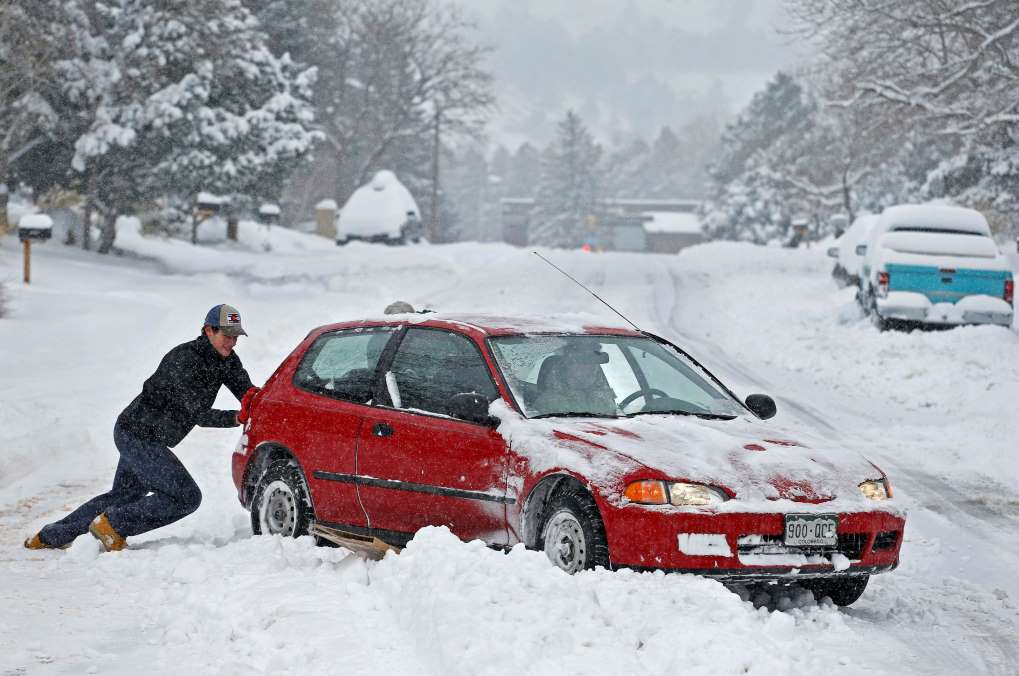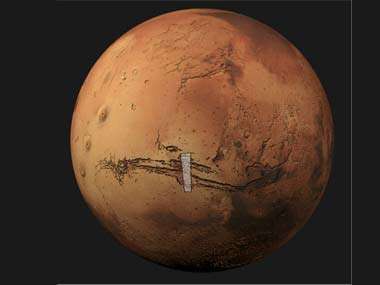December 3, 2016
The coldest and most far-reaching arctic blast so far this season will spread across the majority of the contiguous United States next week.

December 3, 2016
The coldest and most far-reaching arctic blast so far this season will spread across the majority of the contiguous United States next week.

Alex Vlasity helps push out a passing car which became bogged on an unplowed road after a night of heavy snowfall, in Boulder, Colo., Tuesday, Dec. 15, 2015. The biggest winter storm to hit the Denver area so far this season has left most schools closed and created some havoc on the roads for those forced to commute.
Frigid air from the depths of the Arctic will plunge into the United States as the jet stream (a fast-river of air along which storms travel) drops southward.
The coldest days of next week will yield highs and lows of generally 10-20 degrees Fahrenheit below normal from the Northwest and Rockies to the Gulf and East coasts.
Departures from normal highs will even approach 30 degrees in Billings, Montana, and Denver, Colorado.
The northern Rockies and northern Plains will face multiple days of highs in the single digits and teens. Subfreezing highs will then spread to the central Plains, Great Lakes and interior Northeast.
“Afternoon high temperatures in cities like Kansas City and St. Louis will only be in the 20s late in the week, while some places in the Dakotas may have a day or two where the temperature does not even get above zero,” AccuWeather Meteorologist Brian Thompson said.
“For many places in the East, temperatures on Friday will be lower than at any point during last year’s unusually warm December.”
Temperatures soared to a high of 69 F in Philadelphia on Dec. 12, 2015, for last year’s Army-Navy football game.
Fans and players will endure dramatically colder conditions for next Saturday’s game in Baltimore. Temperatures will struggle to reach 40 F as biting winds blow.
“To add insult to injury, gusty winds will accompany the arctic chill, which will produce AccuWeather RealFeel® Temperatures that are below zero for a time in most areas north of Interstate 70,” Thompson said.
Residents will need make sure they are sufficiently bundled up before heading outdoors and make sure animals have proper shelter.
Temperatures will struggle to climb much above the 50-degree mark later next week along the I-10 corridor from El Paso, Texas, to Houston to Jacksonville.
“This arctic air mass will mean an early cold snap for much of Florida, where high temperatures in Tampa and Orlando will not even reach 60 degrees on Friday,” Thompson said.
Such highs will be more representative of these city’s typical early December lows.
Temperatures could drop below freezing across the northern Florida Peninsula for one night later in the week.
The arrival of the polar plunge will be marked by windswept snow unfolding over the northern Plains at midweek with a separate zone of snow likely to spread from the central Rockies, including Denver, to the Great Lakes and St. Lawrence Valley.
As the arctic air sweeps over the warm waters of the Great Lakes, another significant lake-effect snow event will unfold.
“This strong push of arctic air will lead to heavy lake-effect snow bands developing downwind of the Great Lakes by Friday and Saturday, where some areas will be measuring the snow in feet,” Thompson said.
More arctic blasts are likely to follow the next week with additional opportunities for snow possible from the central Rockies to the Northeast.
Courtesy: AccuWeather
















































































































